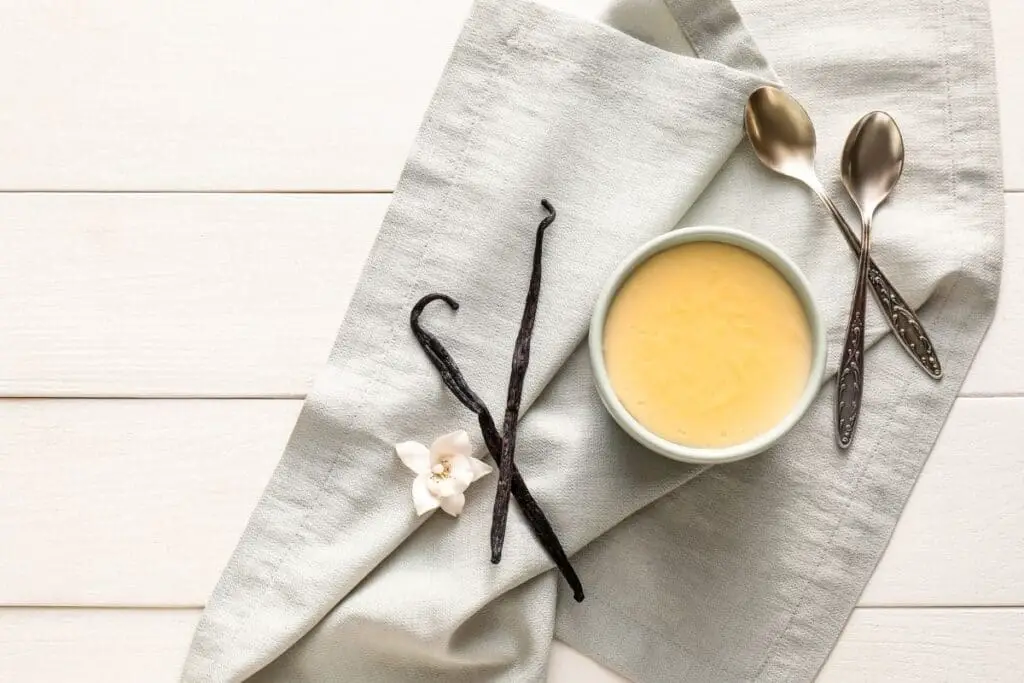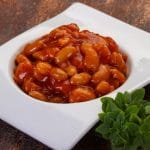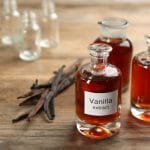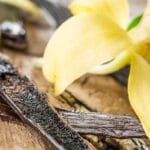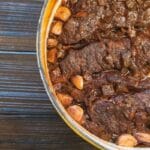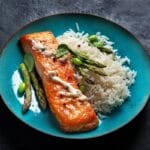Key points:
- Despite being known as the birthplace of vanilla, Mexico’s vanilla production declined over time due to various factors.
- The quality of vanilla isn’t determined by where the beans are grown but by the cultivation and production methods.
- Synthetic vanilla production became popular as a cheaper alternative, and to maintain their reputation, Mexico and other countries began selling synthetic versions with the addition of coumarin, which enhanced the flavor.
- Coumarin, derived from the tonka bean, provides a rich, complex aroma but is banned in the US due to health risks. Mexican food labeling regulations are less stringent, leading to potential inconsistencies in product purity.
Although Mexico is known to be the birthplace of vanilla, there is some confusion as to what Mexican vanilla is and how it is different from other versions of the spice.
In this brief guide we’ll look at the factors that have contributed to the synthetic production of what is recognized as Mexican vanilla today and exactly what the product is.
Cultivation vs Location
The spice quality is not determined by where the beans are grown but by the method of cultivation, harvesting, and curing used in its production.
The climate from different regions may affect the taste slightly, however, it is very subtle and most people will not be able to distinguish the difference.
When it comes to wine, many people will be able to differentiate between wine made from two different varieties of grapes. However few people can accurately tell the difference between grapes of the same variety grown in different regions if they are equal in quality.
Similarly, many people can notice a difference between Tahitian vanilla and the Planifolia variety. However, the same variety (Planifolia) is grown in both Madagascar and Mexico so there is little difference in the natural bean extracts of the same quality from these regions.
So, if there is no difference in the variety nor the flavor of the actual beans grown in Mexico and other parts of the world, why do so many people prize Mexican vanilla extract? Let’s find out.
Mexico’s Spice Production Decline
Mexico was once a major producer of vanilla beans boasting excellent quality cultivation. Due to deforestation, war, and economic changes, Mexico’s production took a dive, but it did keep its reputation for a high quality product.
Synthetic vanilla production in the 1880s offered a cheaper alternative to the natural beans which were laborious and expensive to grow.
As a way to continue cashing in on its reputation for some of the finest vanilla production, Mexico and other Central American countries started selling synthetic versions that were a lot more profitable.
To enhance the synthetic product to more closely reflect the rich, complex, and fragrant characteristics of the real pods, a component called coumarin was added. Mexican vanilla is therefore now mostly known to be a synthetic product with the addition of coumarin which gives it an extra fragrant and rich appeal.
Coumarin is derived from the tonka bean which grows on a Cumaru or Tonka tree. Tonka beans are used in France and other European countries in desserts and perfumes with a flavor described as a complex mix of vanilla, amaretto, almond, and cinnamon.
However, if you live in the United States you will have to pay up for the real beans or settle for coumarin-free products since coumarin is a banned substance due to potential health risks when high quantities are consumed.
Mexican food labeling laws are not as regulated as in the USA which means that many Mexican extracts labeled as pure may in fact be artificial and may contain coumarin.
See more: vanilla substitute
FAQs
Is pure vanilla extract worth the heavy price tag?
Yes, pure vanilla extract can be worth the heavy price tag for its authentic flavor and quality, but it depends on individual preferences and needs.
Why is Mexican vanilla cheaper than other types?
Artificial extracts dominate the Mexican market despite the fact that it once had a reputation for good quality beans. The synthetic product is much more affordable as it does not require the long, laborious, and expensive cultivation process of the delicate plants.
Is Mexican vanilla the same as vanilla extract?
No, Mexican vanilla is not the same as vanilla extract. Mexican vanilla refers to vanilla flavoring made using vanilla beans primarily from Mexico, while vanilla extract is a broader term for a concentrated solution of vanilla flavor extracted from vanilla beans, which can come from various regions.
How should you store vanilla extract?
You should store vanilla extract in a cool, dark place, away from direct sunlight and heat sources. Keeping the bottle tightly sealed and airtight helps preserve its flavor and potency over time.
Conclusion
Mexican vanilla is generally manufactured with the extract of tonka beans. These beans come from a completely different plant species belonging to the pea family. The component coumarin found in these beans contributes to an authentic rich flavor in the artificial extract, however, is outlawed in the United States due to health concerns.
When possible, always choose to purchase beans and scrape out the seeds or make your own extract. This way you can be assured of the purest, best-tasting product and know exactly what the ingredients are.
Up next:
*image by serezniy/depositphotos
